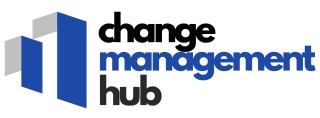
Understanding the Role of Employee Assessment in Change Management
Importance of Employee Assessment as a Cornerstone of Change Management
Employee assessments serve as a critical cornerstone in the realm of change management, enabling organizations to better navigate through transformation. Understanding their role is pivotal to fostering a responsive and dynamic workforce. Assessments provide a structured method to measure employee performance, highlight strengths areas, and identify areas improvement, which are essential for sustained growth and development.
These assessments help in aligning employee performance with the overall goals of the organization, ensuring that both individual and team performance are optimized. Regularly conducted employee evaluations contribute to understanding the current state of the workforce, allowing for tailored approaches to employee development and improvement.
Utilizing performance reviews, degree feedback, and assessment tests, a comprehensive employee assessment system can pinpoint critical areas that need attention. This systematic approach not only identifies gaps but also paves the way for constructive feedback and targeted improvement plans.
For example, an effective employee assessment might reveal a need for enhanced communication skills within a specific team. Addressing this could involve workshops or training sessions, ultimately leading to better management system practices and improved workplace efficiency. Performance management tools and management software can enhance these assessments, providing detailed analytics and insights.
Assessments also play a significant role in fostering employee engagement by involving employees in the feedback process, making them stakeholders in their own professional growth. This participatory approach can significantly boost morale and productivity during periods of change.
To learn more about how employee assessments contribute to the overall performance management process, you can explore strategies to enhance change management with customer insights training.
Key Components of Effective Employee Assessment
Identifying Core Elements for Employee Assessment
In the realm of change management, understanding the key components of effective employee assessments is crucial for fostering a productive workplace. These assessments help in identifying strengths and areas for improvement, ultimately guiding the development of both individual employees and the team as a whole.
Performance Reviews and Feedback Mechanisms
Performance reviews are a cornerstone of employee assessments. They provide a structured opportunity for management to deliver constructive feedback, which is essential for employee growth and improvement. Regular feedback sessions can highlight areas where employees excel and pinpoint areas for improvement, ensuring that everyone is aligned with the organization's goals.
360-Degree Feedback for Comprehensive Evaluations
Incorporating 360-degree feedback into the assessment process can enhance the depth of evaluations. This method gathers insights from various sources, including peers, supervisors, and even self-assessments, offering a holistic view of an employee's performance. Such comprehensive evaluations can uncover hidden strengths and areas that need attention, promoting a culture of continuous improvement.
Utilizing Assessment Tests for Skill Development
Assessment tests are valuable tools for measuring specific skills and competencies. These tests can be tailored to assess particular areas relevant to the organization's needs, helping to identify gaps in skills and knowledge. By focusing on skill development, organizations can ensure their workforce is equipped to handle the challenges of change management effectively.
Setting Clear Goals and Objectives
Clear goal-setting is an integral part of the assessment process. By establishing specific, measurable objectives, employees have a clear understanding of what is expected of them. This clarity not only aids in personal development but also aligns individual performance with the broader objectives of the organization, enhancing overall team efficiency.
For more insights on integrating HR strategies to enhance employee well-being and performance, consider exploring enhancing employee well-being through HR integrations.
Challenges in Employee Assessment During Change
Overcoming Obstacles in Employee Assessment During Transitions
Employee assessments play a crucial role in evaluating performance and setting developmental goals, especially during times of change management. However, embarking on this evaluative journey is not without its challenges. Understanding these obstacles allows companies to navigate them more efficiently.
One major challenge is the subjective nature of performance reviews. When evaluators rely on personal impressions without employing a structured assessment system, inconsistencies can arise. This variability can lead to employee dissatisfaction and a lack of trust in the fairness of evaluations. Employers need to adopt objective assessment tests and utilize feedback from various sources, such as 360-degree feedback, to provide a more rounded view of an employee's performance.
Another significant hurdle is the resistance from employees. During transitions, employees may feel overwhelmed or anxious, perceiving assessments as additional pressure rather than constructive feedback intended to help them grow. Clear communication from management about the purpose and benefits of these evaluations is essential. This can include outlining how assessments help pinpoint areas improvement, tailor development plans, and set achievable goals.
Furthermore, the lack of adequate technology can hamper effective employee evaluation. Without competent management software or a robust online employee assessment management system, organizations may struggle with compiling and analyzing performance data. Leveraging technology to streamline the assessment process ensures that evaluations are not only efficient but also insightful and actionable.
A fourth common challenge is aligning assessments with the organization’s broader performance management goals. It's crucial for leadership to integrate employee development with business objectives to improve team performance and efficiency. A strategic alignment ensures that individual growth contributes to the overall success of the organization.
For a detailed guide on handling specific corrective actions during transitions, consider referring to our article on the role of corrective action requests in change management. This resource guides organizations in utilizing assessments for ongoing improvement and employee engagement in the workplace.
Strategies for Successful Employee Assessment
Strategies to Optimize Employee Assessments
To enhance the overall effectiveness of employee assessments, it is essential to employ well-thought-out strategies that promote constructive feedback and targeted growth. These strategies not only support employees in their professional development but also align their strengths with organizational goals. Here are some key approaches:
- Utilize Performance Management Systems: Implementing a robust performance management system can streamline the assessment process. This system should be capable of integrating various types of feedback, such as 360-degree feedback, to provide a comprehensive view of employee performance. This holistic perspective can help in identifying areas of improvement and strengths alike, improving team performance as a whole.
- Foster Open Communication: Encouraging an open dialogue between managers and their teams is crucial. Regular, transparent communication helps in setting clear expectations and allows employees to express concerns and aspirations. These conversations are pivotal in supporting continuous improvement and employee engagement.
- Focus on Individual Development: Tailor assessments to match individual employee goals and growth plans. Development plans should be tracked through regular performance reviews, focusing on skills enhancement and professional growth. This personalization shows employees that the organization values their unique contributions and is invested in their future.
- Leverage Technology: Incorporate technology tools, such as workforce management software and assessment systems, to efficiently gather data and conduct evaluations. With technological solutions, assessments can provide real-time feedback and analytics, ensuring timely and informed decision-making.
- Encourage Peer Feedback: Including peer assessments in the process offers diverse perspectives, fostering a culture of feedback that benefits both individuals and teams. This method helps in identifying areas of improvement and supports constructive feedback, leading to enhanced team efficiency.
By implementing these strategies, organizations can ensure their employee assessments are not just a formality but a valuable tool for continuous improvement and development in the workplace. Moreover, they can lead to improved employee performance and a more engaged and efficient team, aligning with the broader changes within the organization.
Leveraging Technology in Employee Assessment
Integrating Technological Solutions for Employee Assessments
In today's rapidly evolving workplace, leveraging technology in employee assessments can significantly enhance the efficiency and accuracy of performance evaluations. Advanced management systems provide platforms that streamline the entire process, allowing for more comprehensive and timely feedback.- Assessment Systems: A robust assessment system enables managers and HR professionals to conduct frequent employee evaluations with minimal effort. Such systems offer insights into employee performance and areas for improvement, facilitating constructive feedback and continuous development.
- Utilizing Management Software: Management software can help track employee performance over time, highlighting strengths areas and areas needing improvement. This capacity for ongoing performance reviews ensures that employees receive regular feedback that contributes to their professional growth and team performance.
- Assessment Tests and Feedback Mechanisms: Technology allows organizations to implement customized assessment tests aligned with specific employee goals and competencies. These assessments help in identifying skills gaps and planning targeted development initiatives within the team.
- Leveraging Degree Feedback: Integrating degree feedback into the assessment process offers a comprehensive view of an employee's performance, drawing insights from peers, supervisors, and subordinates. This holistic approach supports more balanced and objective evaluations, fostering employee engagement and facilitating workforce management.
Case Studies: Employee Assessment in Action
Real-World Examples of Effective Employee Assessments
Employee assessments are vital in aligning workforce management with organizational goals, and examining case studies can provide valuable insights into how these assessments function in practice. In various organizations, effectively implementing performance management systems has helped enhance team performance and employees' individual growth.
For instance, consider a technology company that integrated a 360-degree feedback system. This system provided employees with comprehensive evaluations from their peers, supervisors, and subordinates. Such assessments help identify strengths and areas for improvement, fostering a culture of transparency and continuous development. By incorporating these evaluations into performance reviews, the company was able to address specific areas improvement while boosting employee engagement and team efficiency.
Another example can be seen in a service-based organization where regular employee assessments focused on both skill development and job satisfaction. Through consistent feedback loops and targeted development plans, the management system successfully elevated employee performance and retention rates. This strategy aligns closely with performance management best practices, which emphasize continuous feedback and support.
In a retail environment, utilizing assessment tests to evaluate employee skills and improve customer interactions has shown significant benefits. By addressing gaps in skill sets and offering personalized training programs, management can drive workplace improvement and foster a customer-centric culture.
These examples highlight how employee assessment systems, paired with constructive feedback and targeted growth opportunities, can cultivate a supportive environment for employee development. Whether it is through innovative technology solutions or strategic workforce management practices, assessments serve as a fundamental tool in optimizing team performance and meeting organizational goals.













